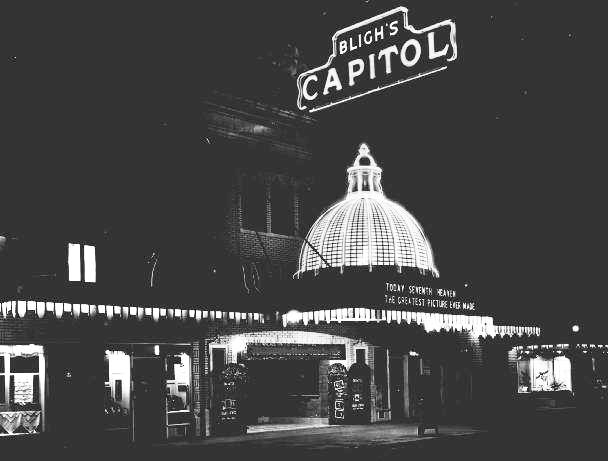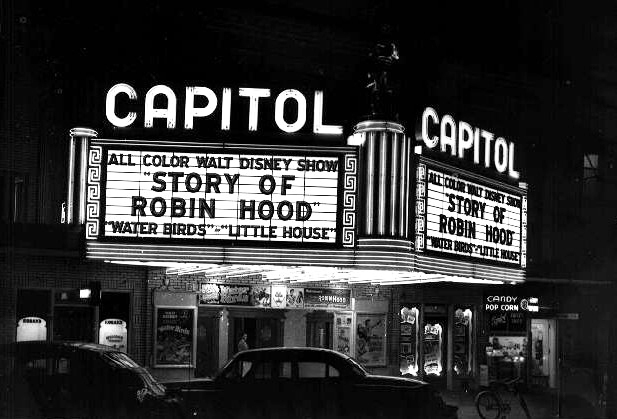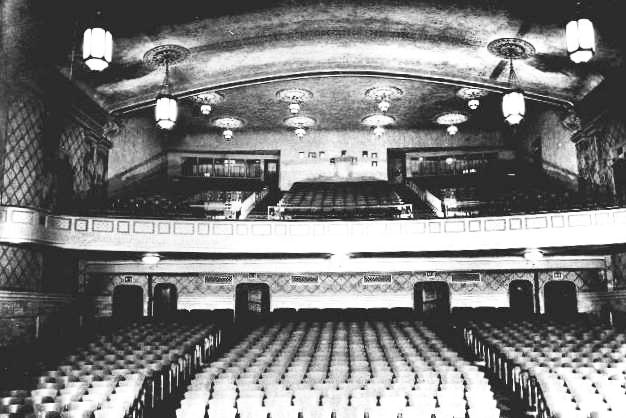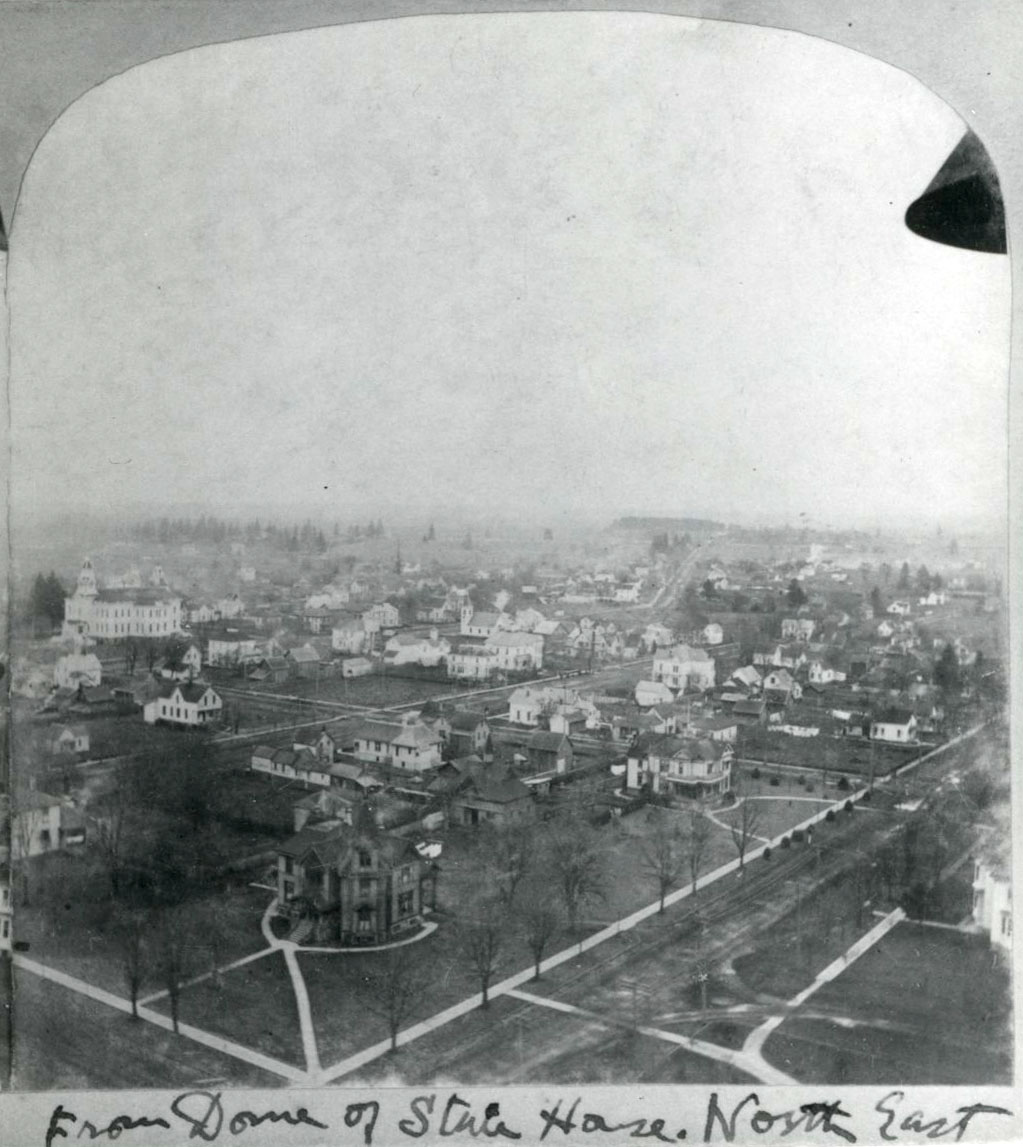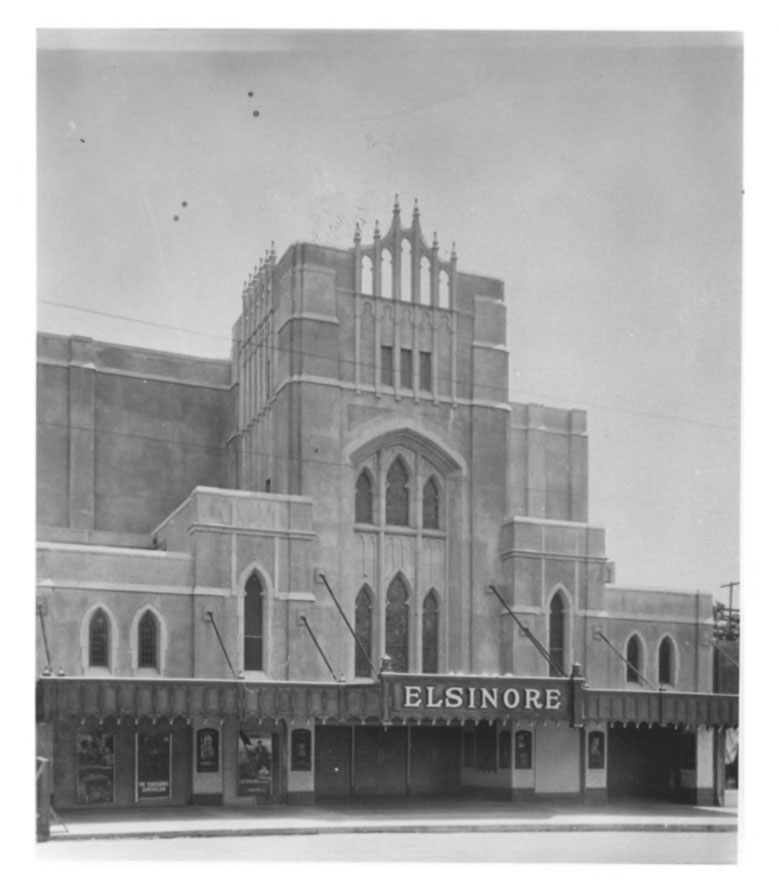The Capitol Theater, which opened in 1926, was one of Salem’s finest vaudeville and silent movie houses. Located on State Street, the theater was originally owned by Frank D. Bligh, a Canadian-born businessman. His father, T.G. Bligh, had been the proprietor of numerous theaters and hotels. After his father’s death in 1924, Frank Bligh and architects Tourtelotte & Hammel of Portland built the Capitol Theater and the Bligh Building next door (today's Pacific Building), which housed almost a dozen shops and over thirty office spaces.
The new theater opened to the public on October 5, 1926. About 10,000 guests toured the 1,200-seat theater that evening, marveling at the terra cotta architecture and the Florentine-style interior. The décor consisted of rich silk and plush draperies in various shades of burnt orange, with green silk fringe and tassels. One of the most striking external features was the brightly lit stained-glass marquee, which was shaped like the dome of the State Capitol building (before the 1935 fire).
The theater also contained two glass rooms—the smoking room and the crying room, which allowed patrons to view shows while smoking or attending to children. The theater was built with the most modern stage equipment. The $25,000 Wurlitzer organ was built with its own elevator, allowing it to be raised and lowered from view of the audience.
For years, the Capitol Theater entertained audiences with vaudeville shows, plays, silent films, and talkies. Samuel Phelps Totten, one of four vaudeville organists on the Pacific Coast at that time, was frequently featured in solos, Sunday concerts, and stage prologues. Other vaudeville companies, such as Pantage’s, brought performers to the theater, including Gaby Du Valle, a French prima donna, and Jay Kay and Girls performing a comedy revue, “This, That, and What Not.” By the 1950s, the stage acts had diminished and the theater limited its shows to second-run movies.
The theater was closed by the early 1990s and was torn down in 2000 because of structural decay. The playhouse still remains, owned by the neighboring Historic Elsinore Theatre, but the auditorium space is now a parking lot. Particles of plaster and wall decoration could still be seen on the east side of the Bligh Building until it was painted over in 2007. The rectangular proscenium arch, although bricked in with gray concrete blocks, can still be seen on the north side of the playhouse.
-
![Bligh's Capitol Theater, 1928.]()
Capitol Theater, 1928.
Bligh's Capitol Theater, 1928. Courtesy Marion County Historical Society
-
![Bligh's Capitol Theater, about 1927.]()
Capitol Theater, 1927.
Bligh's Capitol Theater, about 1927. Courtesy Marion County Historical Society
-
![Capitol Theater on State Street, 1939.]()
Capitol Theater, 1939.
Capitol Theater on State Street, 1939. Photo Ben Maxwell, courtesy Marion County Historical Society
-
![Capitol Theater marquee, 1940.]()
Capitol Theater marquee, 1940.
Capitol Theater marquee, 1940. Courtesy Marion County Historical Society
-
![Capitol Theater lobby, 1947.]()
Capitol Theater lobby 1947.
Capitol Theater lobby, 1947. Courtesy Marion County Historical Society
-
![Capitol Theater auditorium and balcony, 1940.]()
Capitol Theater auditorium, 1940.
Capitol Theater auditorium and balcony, 1940. Courtesy Marion County Historical Society
Related Entries
-
![City of Salem]()
City of Salem
Salem, the capital of Oregon, is located at a crossroads of trade and t…
-
![Elsinore Theater]()
Elsinore Theater
Named after the sixteenth-century Danish castle in William Shakespeare’…
Map This on the Oregon History WayFinder
The Oregon History Wayfinder is an interactive map that identifies significant places, people, and events in Oregon history.
Further Reading
“Bligh’s Capitol Theatre and the New Bligh Building.” Capitol Journal, Oct. 8, 1926.
“Tuesday Set for Opening New Theater.” Capitol Journal, Oct. 2, 1926.
Maxwell, Ben. “A Hundred Years of Salem Theatrical History.” In Marion County History, vol. 4, pp. 25-29. Salem, Ore.: Marion County Historical Society, 1958.
Maxwell, Ben. “Salem’s Theatrical History.” http://www.salemhistory.net/places/theater_history.htm.



